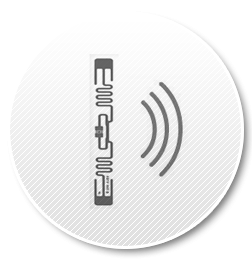The starting point in any traceability project is the univocal identification of each unit. For that purpose, it is necessary to place an identification device in each of the products. Three types of identification technology are currently used, all of them working under GS1 standards, which guarantees the compatibility and interoperability between the systems and suppliers.

RFID
RFID (Radio Frequency Identification) is a remote storage and data collection technology based on the use of radio waves, that uses devices called tags—little labels without an external power source that can store information giving a unique identity to the product it is attached to. The tags, having an integrated circuit (chip) and an antenna, receive information wireless when they enter an area irradiated by an RFID antenna. Through that supply the tag is connected and establishes a communication with the reader, through the antenna, enabling in this way the recording and/or reading of its memory. The reader transmits the collected information for an RFID software that manages the system.
The natural characteristics of radiofrequency enable to read simultaneously a great quantity of units and to attach RFID tags inside the units to be identified as the radio waves can go through the package material.

Besides the RFID tag, some solutions have the unique numeric code printed visibly enabling the validation of the product origin and traceability by the patient.

DATAMATRIX
The second type of identification technology is a data matrix, Datamatrix. It’s an optical technology, an evolution of the conventional barcode. The difference of this technology with the previous one is that it enables the recording of a large amount of information in a reduced format.
Besides the serial number that identifies the product, Datamatrix as well as RFID enable to record other data that help to improve the efficiency and provide valuable information in the traceability system management.
Datamatrix can be printed outside the product box to be identified or in a label to be stuck in the product. The data collection is done with a 2D optical scanner. Some solutions count with a unique numeric code complementarily to the Datamatrix. This code is hidden under a scratch off material that enables the validation of the product origin and traceability for the patient.

LINEAR BACODE
The last available option of identification technology is the linear barcode.
As well as the Datamatrix, the barcode can be printed directly on the box or in a tag that is later stuck.
Despite the limitation connected with size/information capacity, the pioneer identification technology has the advantage of the wide circulation and the extensive use of its readers in all the parts of the chain.